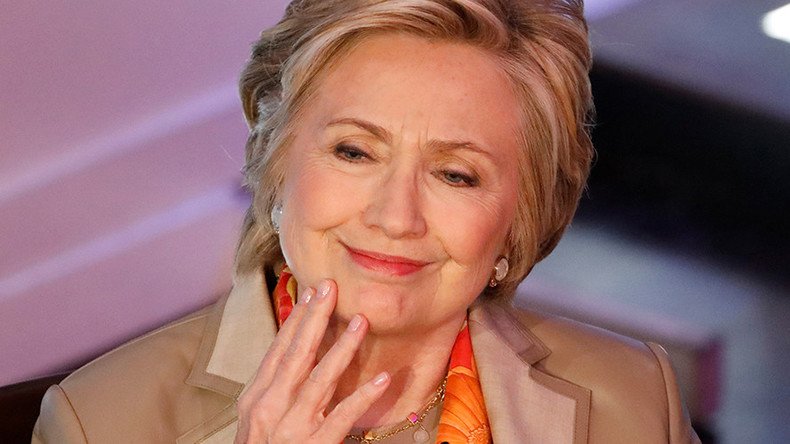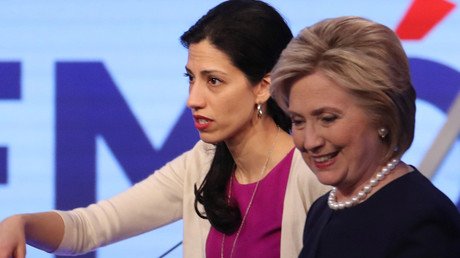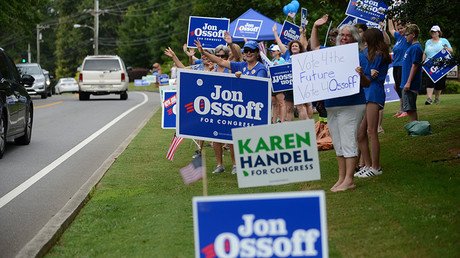What do Democrats really want: Votes of the poor or money of the rich?

The Democrats are to blame for handing Donald Trump the opportunity to play out his slapstick farce in the White House, but the opportunity for electoral redemption comes around quickly in the United States.
President Trump’s victory in 2016 was less a victory for the Republican Party and more a vote of 'no confidence' in establishment politics and the Washington status quo. Hillary Clinton, more than any candidate imaginable, personified the political establishment that had become remote from the everyday concerns of the people it was elected to represent.
Trump’s election was also a vote of ‘no confidence’ in the Democratic Party, which has become increasingly elitist. Many senior Democratic elected representatives espoused Liberal policies that were of little interest to their old blue collar heartland. So they turned to Trump.
In the 2020 Presidential election, the Democrats will be at an advantage for two reasons – the party will not have Hillary Clinton as a candidate, and it will be up against a Republican candidate who is sure to be damaged by the behavior of the current President. Whether that Republican candidate is Donald Trump again is far from certain, but more of that later.
The first substantial shot at redemption for the Democratic Party comes in the 2018 mid-term elections – in 16 months’ time. The Democratic Party specializes in self-flagellation and it has indulged in it gleefully since November. Self-analysis and hand-wringing play a role, but now, with the mid-term coming fast the fundamentals must be put in place. The party needs an energized and galvanizing leadership, good candidates and coherent policies.
Hillary Clinton is gone, hopefully taking Bill with her. They are yesterday’s politicians and they and their toxic brand should have no part in the Democrats’ revival.
For the first step, an energized and galvanizing leadership, there has been mixed success. Nancy Pelosi is the House of Representatives Minority Leader, and hence de facto the Democrat’s national leader. She became leader in 2003 and became the only female Speaker of the House from 2006 to 2010. Despite the Democrats losing control of the House in the 2010 mid-terms she stayed on as leader. That’s a long time at the top and she is now 77 years old. She has been battered by electoral defeats. After the 2016 Trump victory the Republicans had control of the Presidency, the House and Senate.
Ohio Congressman Tim Ryan, 44, was convinced by colleagues, deeply unhappy with the Presidential defeat, to stand against her. She defeated Ryan by a vote of 134-63 in November. But there was high profile opposition to her re-election.
Pelosi said at the time, “I don’t think Democrats want a new direction.”
Really? The party has since lost four special elections in a row. Special elections are held to fill vacant seats mid-term. After the latest, Jon Ossoff’s loss in Georgia’s Sixth Congressional election, the Democrats went into full panic mode. These should be optimistic times for an opposition party - President Trump is flailing and increasingly unpopular. The Rasmussen Reports daily Presidential Tracking Poll showed that 45 percent of US voters approve of President Trump’s job performance – 53 percent disapprove. Shockingly, 44 percent “strongly disapprove” of the President’s performance.
Yet the Democrats can’t find a win. A primary reason can be found in some of the criticisms from party members in the wake of Ossoff’s defeat.
Murshed Zaheed, a former aide to Democratic Senator Harry Reed and the political director of Credo Action, a group that is trying to forward progressive ideas and policies summarized the problem well, put forward his reasons for the failings.
“Ossoff ran away from the resistance and tried to appeal to the so-called middle of the road voters. It was Republican versus Republican-lite,” said Zaheed.
‘Republican lite’ is an accusation that was thrown at Hillary Clinton, Nancy Pelosi and others. The Democrats, predominately Liberal and progressive, have acquired the international tendency of moderate political parties to gravitate towards the center. However, the wish to appeal to everybody can cause your party to stand for nothing.
What did Hillary Clinton stand for? I have just finished a new book, 'Shattered', about her dismal performance in the 2016 campaign. It repeatedly shows her campaign team asking this question and seeking an answer. They never came up with an answer.
She succeeded in becoming the first woman candidate of either major party for the Presidency, a positive historical achievement. Just as Trump presented his lack of political experience as a positive, Hillary’s citing of her impressive political CV became a negative. The American electorate was looking for a candidate who would articulate their thoughts and prejudices. Trump’s right wing allies, like chief strategist Steve Bannon and political provocateur and Liberal hate figure Roger Stone fed Trump those thoughts and prejudices. He played to the white working classes, particularly in the Rust Belt, the former manufacturing heartland of the United States.
Trump said he would “drain the swamp” – oppose the Washington establishment of Clinton and Obama who had neglected those voters for so long.
And on that seismic moment in November 2016, when Michigan - home of the automobile and manufacturing - went for Trump it was all over. The symbolism was striking. Unionized factory workers, immigrants and children of immigrants - the Democratic base - had gone Republican.
The Democrats know they will win back these voters not by becoming more like Trump, because that battle in the right center was lost. They must go back to what they once were – a progressive party of the left that appealed to the aspirational workers, immigrants and the downtrodden as well as coastal liberals. Right now they seem to stand only for liberal elites.
The Democrats have taken the important step – they have admitted they were wrong. They unveiled the Better Deal policy platform two weeks ago and it is a start. Consciously echoing the “New Deal” of Democratic deity President Franklin D Roosevelt, the populist platform was launched under the slogan: 'A Better Deal: Better Jobs, Better Wages, Better Future'.
Senate Minority Leader Chuck Schumer said that after losing elections in 2014 and 2016: “The number one thing we did wrong is not present a strong, bold economic agenda to working Americans so that their hope for the future might return again.”
The Democrats proposed a $1 trillion infrastructure plan, an increase of the minimum wage to $15 an hour and a paid family and sick leave policy. The party sees these policies as having the potential to bring back voters they lost to Trump – but the Democrats will need electoral victories to put these plans into law.
The Democrats will need to win 24 extra seats to take control of the House in the 2018 midterm elections. Every House seat and a third of the Senate will be in play. Historically, the party controlling the White House loses seats in the midterms, as happened to the Democrats in both 2010 and 2014 with Obama as president.
Trump, on his part, has failed to strike any working relationship with his Republican colleagues on Capitol Hill and failed to enact any meaningful legislative program. He has continued to outrage domestic and international public opinion and now appears ready to enter a catastrophic nuclear conflagration with North Korea (and perhaps China). It would be a conservative prediction to say that the mid-terms will be a challenging election for the Republicans – but only if the Democrats can get their house in order. They must stay the course with Progressive policies.
And then comes the big one – the Presidency. It is too early for most to even contemplate the most bruising and expensive of all elections. Yet such is the unprecedented unpredictability of Trump that talk about the Presidential Election 2020 has begun. If the Democrats don’t save America and the world from Trump then perhaps the Republicans will.
Military solutions are now fully in place,locked and loaded,should North Korea act unwisely. Hopefully Kim Jong Un will find another path!
— Donald J. Trump (@realDonaldTrump) August 11, 2017
Vice President Mike Pence last Sunday loudly denied speculation in the anti-Trump New York Times that he was considering a run at the White House in 2020.
Nevertheless, it is likely that somebody will emerge from the Republican ranks to oppose Trump. When I was in Washington earlier this year, Republican Speaker of the House Paul Ryan was the most impressive politician I met. He, like Pence, is an Irish American who would draw away traditional Democrat votes.
And Trump, besieged by the investigation into his election team’s links with Russia, assailed by bad polls, possibly mired in conflict with South Korea, might just decide not to stand. Such a move is not without precedent. Another deeply complex President, the Democrat Lyndon Johnson - cracking up over the war in Vietnam and under pressure from Bobby Kennedy - shocked America by deciding not to run for another term in 1968.
If Pence does stand then the Republican right would have their true candidate – he is deeply conservative. And this could embolden the Democrats to move to the left as so many of their grassroots desire.
There is one Democrat in the field already. Maryland Rep John Delaney has announced his candidacy for 2020. Commentators are describing the early declaration of Congress’ third richest (he’s worth $92 million) representative as “quixotic”.
Congratulations to Karen Handel on her big win in Georgia 6th. Fantastic job, we are all very proud of you!
— Donald J. Trump (@realDonaldTrump) June 21, 2017
Senator Elizabeth Warren of Massachusetts has been talked up. Democratic New York assemblywoman Christine Pelligrino and Benjamin T Jealous a former president of the NAACP have also been mentioned.
Bernie Sanders, the darling of the left, who electrified the Democratic nomination race with his genuinely progressive policies will be 79 in 2020. He may well be too old, but don’t tell his supporters that.
There is a more powerful force at work than Father Time when it comes to Bernie Sanders – money. The Presidential election run is now a multi-billion dollar business.
Clinton spent a whopping $1.4 billion in 2016, with Trump close behind at $957 million.
The Clinton’s have legendary fund-raising skills. Corporations fall over themselves to give them money, Hollywood actors give their time to raise it. Nancy Pelosi too is a fundraiser of almost comparable legendary status, and this was a crucial factor in the 77 year old keeping her position. This is what now counts in Washington and among the Democrats, who have belatedly attracted the rich in the way the Republicans traditionally did.
Money is why they have hung onto political leaders who are past their sell by date. And the fear of alienating corporate donors with excessively leftist politics is what will hold them back from making the radical policy and personnel changes. It will come down to whether they want the money of the rich or the votes of the poor more.
The statements, views and opinions expressed in this column are solely those of the author and do not necessarily represent those of RT.















